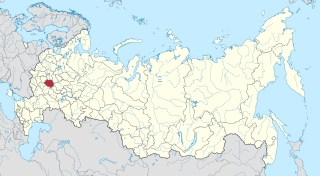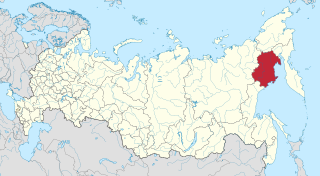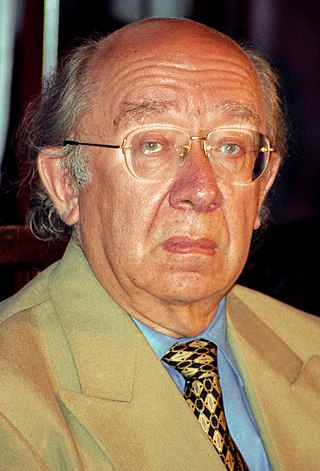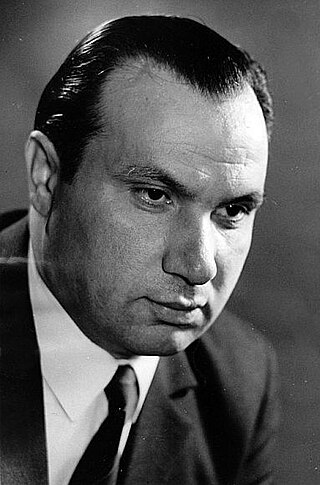
Khabarovsk Krai is a federal subject of Russia. It is located in the Russian Far East and is administratively part of the Far Eastern Federal District. The administrative centre of the krai is the city of Khabarovsk, which is home to roughly half of the krai's population and the largest city in the Russian Far East. Khabarovsk Krai is the fourth-largest federal subject by area, and had a population of 1,343,869 as of 2010.

Sakhalin Oblast is a federal subject of Russia comprising the island of Sakhalin and the Kuril Islands in the Russian Far East. The oblast has an area of 87,100 square kilometers (33,600 sq mi). Its administrative center and largest city is Yuzhno-Sakhalinsk. As of the 2021 Census, the oblast has a population of roughly 500,000.

Tver Oblast is a federal subject of Russia. Its administrative center is the city of Tver. From 1935 to 1990, it was known as Kalinin Oblast. Population: 1,353,392 (2010 Census).

Nizhny Novgorod Oblast is a federal subject of Russia. Its administrative center is the city of Nizhny Novgorod. It has a population of 3,119,115 as of the 2021 Census. From 1932 to 1990 it was known as Gorky Oblast.

Kirov Oblast is a federal subject of Russia located in Eastern Europe. Its administrative center is the city of Kirov. As of the 2010 census, the population is 1,341,312.

Tyumen Oblast is a federal subject of Russia. It is located in Western Siberia, and is administratively part of the Urals Federal District. The oblast has administrative jurisdiction over two autonomous okrugs: Khanty-Mansi Autonomous Okrug and Yamalo-Nenets Autonomous Okrug. Tyumen Oblast, including its autonomous okrugs, is the third-largest federal subject by area, and has a population of 3,395,755 (2010).

Astrakhan Oblast is a federal subject of Russia located in southern Russia. Its administrative center is the city of Astrakhan. As of the 2010 Census, its population was 1,010,073.

Murmansk Oblast is a federal subject of Russia, located in the northwestern part of the country, with a total land area of 144,900 square kilometres (55,900 sq mi). Its only internal border is the Republic of Karelia to the south, as well is bordered internationally by Finland to the west and Norway to the northwest and the Barents Sea lies to the north and White Sea lies to the south and east. Its administrative center is the city of Murmansk. As of the 2010 Census, its population was 795,409, but at the 2021 Census this had declined to 667,744.

Lipetsk Oblast is a federal subject of Russia. Its administrative center is the city of Lipetsk. As of the 2021 Census, its population was 1,143,224.

Tambov Oblast is a federal subject of Russia. Its administrative center is the city of Tambov. As of the 2010 Census, its population was 1,091,994.

Smolensk Oblast, informally also called Smolenshchina (Смоленщина), is a federal subject of Russia. Its administrative centre is the city of Smolensk. As of the 2021 Census, its population was 888,421.

Ryazan Oblast is a federal subject of Russia. Its administrative center is the city of Ryazan, which is also the oblast's largest city.

Magadan Oblast is a federal subject of Russia. It is geographically located in the Far East region of the country, and is administratively part of the Far Eastern Federal District. Magadan Oblast has a population of 136,085, making it the least populated oblast and the third-least populated federal subject in Russia.

Gennady Nikolayevich Rozhdestvensky, CBE was a Soviet and Russian conductor, pianist, composer and pedagogue.

When the Soviet Union existed, different governments had ruled the southern Caucasus regions of Chechnya and Ingushetia. Within the Mountain Autonomous Socialist Soviet Republic, later annexed into the Russian Socialist Federative Soviet Republic, they were known as the Chechen Autonomous Oblast and the Ingush Autonomous Oblast, which were unified on January 15, 1934 to form the Checheno-Ingush Autonomous Oblast. It was elevated to an autonomous republic as the Checheno-Ingush Autonomous Soviet Socialist Republic from 1936 to 1944 and again from 1957 to 1993. Its capital was Grozny.

Oleksiy Fedorovych Fedorov, was one of the leaders of Soviet partisan movement during World War II. He was twice awarded the title Hero of the Soviet Union, making him one of the only two partisan leaders to receive the title twice.

Prohibition in the Russian Empire and the Soviet Union existed during 1914–25. The Russian term is "сухой закон".

Iskhak Shumafovich Mashbash is a Circassian poet, writer and translator. He is the author of more than 80 books in Adyghe and he has translated many works from Russian to Adyghe and Kabardian, including the Quran. His works were published in English, French, Spanish, German, Polish, Mongolian, Turkish, Arabic and other languages.

Anuar Turlybekuly "Anuarbek" Alimzhanov was a Soviet and Kazakh writer, publicist, public figure and politician. From October 29 to December 26, 1991, he headed the Soviet of Republics of the Supreme Soviet of the USSR, which adopted the Declaration on the termination of the existence of the USSR.


















